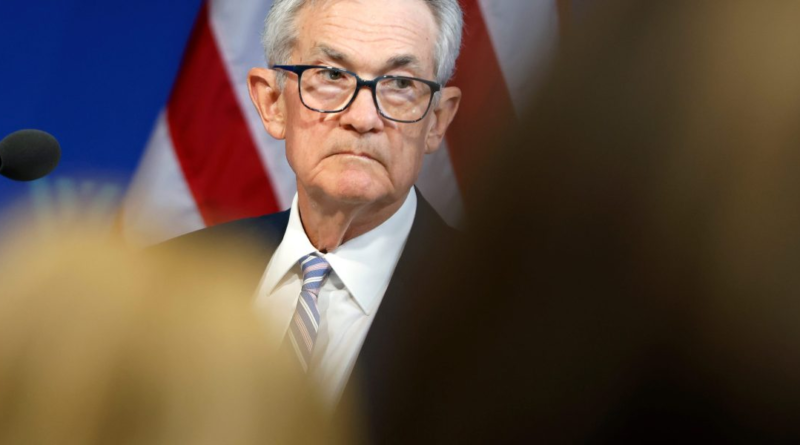Bitcoin tumbles below $57,000 on day of Fed meeting
Bitcoin appears to be on a trajectory at odds with the bullish predictions many investors anticipated following the network’s halving on April 19. Falling 11% in the last day, to trade at $56,889 on Wednesday afternoon, according to CoinGecko data, the cryptocurrency was trading at around $64,000 on the halving date. The price has retracted by 20% since mid-March, when it hit an all-time high of $73,000.
With the halving in the rearview, and exchange-traded fund flows exhausted, “This leaves Bitcoin watchers focused on macro, and the picture is cloudy at best,” Andrew Baeher, head of product at CoinDesk Indices, told Fortune.
The latest inflation rate, as of March 31, is 3.48%, according to the Consumer Price Index, up from 3.2% in February. This has dampened hopes that the Federal Reserve, meeting May 1, could cut interest rates. “This sets up a challenging market for risk assets in general, and Bitcoin and crypto tends to follow suit,” David Lawant, head of research at FalconX, told Fortune.
ETF flows began to slow when U.S. inflation was higher than anticipated for the second consecutive month. Since March 18, the ETFs have seen outflows on 58% of all trading days, according to 10x Research, with $580 million in outflows since the halving.
Last week, BlackRock’s winning product, IBIT, saw zero inflows for the first time, according to CoinGlass data, ending its 71-day streak of fresh investments. The fund has not reported inflows since. Also, last Thursday, Fidelity’s FBTC, the current runner-up in the ETF race, reported its first outflow, which has also continued since, totaling $67.6 million.
The average ETF buyer may be “underwater,” Markus Thielen, CEO of 10x Research, told Fortune. He estimates the aggregate entry price of $57,300 for the holders, just slightly under the value of the underlying asset. “With stagflation concerns, we expect more selling in the near term,” he added.
And in the derivatives market, liquidations in Bitcoin and Ether futures have totaled over $300 million since Tuesday, which is also creating downward price pressure, according to CoinGlass data.
Liquidations may be caused by “TradFi” tourists pushing long positions until the halving, says Thielen, plus Bitcoin miners selling supply to protect their operations which are predicted to be in the $53,000 to $55,000 region, he added.
Experts have also cautioned expectations that an immediate post-halving rally could counteract these macroeconomic conditions, instead pointing to a longer-term ascent that takes months, not weeks.
For instance, according to CoinGecko data, a fortnight after the previous halving in May 2020, the price of Bitcoin had risen just 1.5%, and flatlined for the next two months. But within less than a year from that point, the price had risen over 500%. Likewise, after the July 2016 halving, there was no substantial price movement until three months post-event, until it began a gradual ascent, culminating with a 3,000% price increase by the end of the following year.
“The market is looking for the next short-term industry catalyst after the halving and the launch of spot crypto ETFs in Hong Kong, for which some players might have set expectations a bit too high,” said Lawant.




